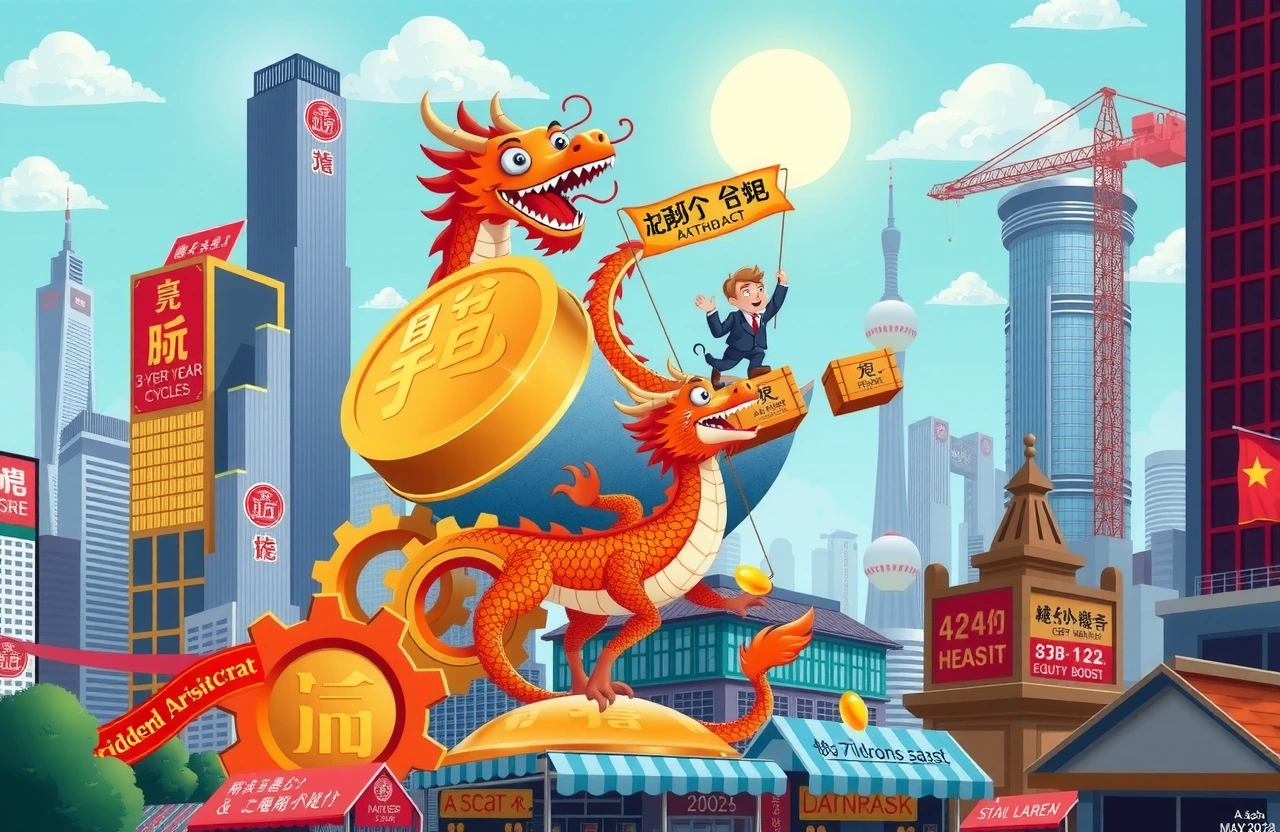Market-Transforming Policy Shift
A seismic policy shift rolled out during the weekend promises to redefine China’s investment landscape. The Ministry of Finance’s new long-cycle assessment mechanism for state-owned insurers fundamentally rewrites performance metrics. The amended rules introduce multi-year evaluation horizons—three-year cycles carrying 50% weight and five-year cycles at 20%, supplementing annual assessments. This architectural overhaul targets insurers’ notorious short-termism by incentivizing patience.
The implications could reshape China’s capital markets profoundly. Unlike mutual funds facing redemption pressures, insurance portfolios represent patient capital with decade-long liabilities. Now freed from quarterly performance churn, insurers gain structural leeway to deploy capital counter-cyclically, transforming them into stability anchors. Market analysts unanimously view this as Beijing’s masterstroke to combat volatility.
The Trillion-Dollar Catalyst
Why trillion dollars? Consider the scale: China’s insurance sector oversees over $3.6 trillion in assets. Historically constrained to maintaining around $450 billion in equities despite allowable allocations, the assessment shift could unleash pent-up capacity equivalent to Jamaica’s GDP. As Cheng Shi, Chief Economist at ICBC International, notes: “The timeframe adjustment mathematically doubles tolerable drawdown thresholds.” Essentially, insurers can withstand deeper dips—crucial for justifying strategic accumulation during corrections.
The policy arrives amid promising signals: CSI 300 (沪深300) valuations linger near historic lows while corporate governance reforms elevate dividend culture. Market experts now forecast insurers could feasibly allocate an incremental 8-12% to equities—translating to $288-$432 billion fresh capital over three years.
Insurance Heavyweights Revealed
Latest quarterly disclosures uncover 738 A-share holdings representing insurance firms’ conviction plays. Sector concentration highlights defensive priorities:
- Electronics: 87 positions
- Healthcare: 78 positions
- Industrial Equipment: 71 positions
- Power Infrastructure: 62 positions
Among these insurance heavyweights, strategic dominance emerges clearly. Eliminating companies where insurers act as controlling shareholders (e.g., China Life Insurance, Ping An Bank), nine enterprises show majority ownership:
| Company | Insurance Ownership | Sector |
|---|---|---|
| CSG Holding | 28.7% | Materials |
| Shenzhen Agricultural Products | 26.4% | Consumer Staples |
| Gemdale Corporation | 23.9% | Real Estate |
| Wonders Information | 22.1% | Technology |
The Time-Tested Performers
The real gold lies not just in concentration, but duration. Over 330 stocks demonstrate continuous insurance ownership exceeding five consecutive quarters. Banking giants dominate these marathon positions:
- China Minsheng Bank: 60 quarters (15+ years)
- Financial Street Holdings: 60 quarters
- China Merchants Bank: 54 quarters (13+ years)
Endurance aligned neatly with returns: Stocks held over 12-months delivered nineteen multi-baggers. China Merchants Bank rewards holders with 559.65% cumulative growth after 52 quarters of continuous backing while Zhejiang Yinlun Machinery rose 194% over thirty quarters.
The Dividend Aristocrat Strategy
Not surprisingly, insurers lean steeply toward yield. Banks commanded nine of seventeen disclosed position hikes this year. High-dividend assets—defined by consecutively exceeding 5% dividend yields—formed the backbone of allocations. Thirty recurring champions meet this criterion:
- Jizhong Energy Group: 12.26% average yield
- Yutong Bus: 10.11% average yield
- Huaibei Mining: 7.8% yield at 6.2x P/E
Undervalued Opportunities
Deep-value traps accompanying these yields tempt contrarians. Several high-yield stocks languish below 9x earnings:
- Gree Electric: 8.7x P/E, 6.3% yield
- Shanghai Rural Commercial Bank: 5.2x P/E
- China CITIC Bank: 4.3x P/E with 6.1% dividend
The trend reflects insurers’ disciplined focus on cashflow stability amidst China’s structural shifts like industrial digitization and consumption upgrades. What banks offered until recently—predictable profitability and asset coverage—now extends toward utilities and materials shielded from technological disruption.
The Ecosystem Opportunity
Beyond stimulating flows, the policy systematizes healthier market structures:
- Volatility Suppression: Actuarial predictability addresses sell-off cascades
- Investor Confidence: Neighborhood diversification effects attracting retail/savings capital
- Corporate Discipline: Insurers hugely vote against MYOPIC buybacks
This third function proves transformative: Insurers prioritize sustainable payout growth above ephemeral buyback tricks. 2025 voting records already showcase intensified pressure on portfolio firms lacking coherent shareholder return roadmaps.
The Global Ripple
Though domestically focused, the repositioning unlocks international opportunities:
- Encourages Hong Kong H-shares inclusion expansion
- Ascends insurer capabilities initiating overseas acquisitions
As Goldman Sachs’ Asia strategist Kinger Lau notes: “The policy structurally resolves insurers’ capital liberation dilemma—finally empowering international ambitions.” This manifests Chinese capital’s evolution beyond exporting savings toward exporting financial sophistication.
Implications For Investors
The exposure windows now opening reward discernment:
- Prioritize insurers’ century holdings—duration signals creditability
- Monitor rotation signals during quarterly filing windows
- Study dividend/leverage crossover points signaling entry triggers
The transition definitely won’t deter machinations: competitors capitalizing on insurers forced selling when hitting technical thresholds still occur. But broadly, the structural incentivization toward fundamental investing establishes firmer foundations.
Individual investors should identify insurers’ conviction stocks across disclosures—a virtual roadmap toward China’s highest-quality balancing acts between yield and resilience. Their clout makes passive payer industries indefensible—consistently outperforming narrative-driven counters through downturns. Ride these stability anchors through turbulence.



